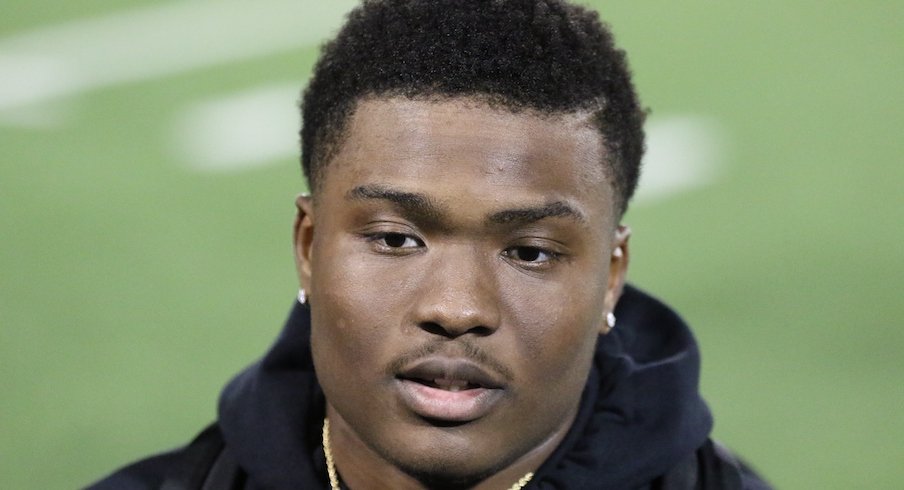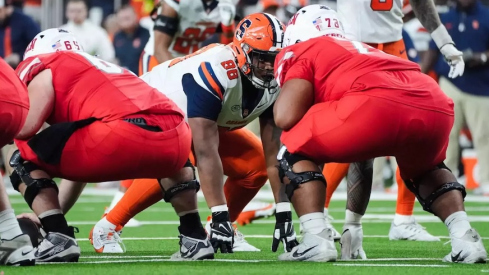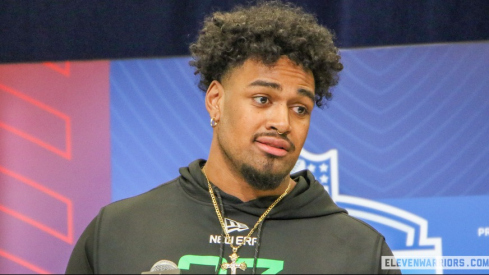To prepare for Saturday’s game against Michigan State, Dwayne Haskins did what normally does: watch film. By Tuesday, he had already watched five game of the Spartans.
Ahead of this weekend’s game, he did something a little bit different, though. He got some help from Ohio State’s biggest rival: Michigan quarterback Shea Patterson.
“I've known Shea since I was in eighth grade,” Haskins said. “We played in the All-Star game together, Elite 11, all that type of stuff. I hit him up asking how they played defensively, and he just gave me some tips going into this week.”
Patterson’s Wolverines handled the Spartans, beating them 21-7 on Oct. 20. Patterson went 14-for-25 for 212 yards and two touchdowns, adding 24 yards on eight rushes.
Haskins and Patterson spoke for about 20 minutes around noon on Thursday. The Michigan signal-caller's advice was fairly simple.
“They're going to bring a lot of different stuff,” said Haskins, recounting Patterson’s advice. “Watched their stuff. Lot of empty stuff. They brought six-man pressure to five-man protection. We're just going to figure out what we need to do as far as gameplan goes and I'm going to get myself together for different types of pressures and looks I get this week.”
Patterson isn’t the only high-profile quarterback with whom Haskins has a relationship. He also knows Oklahoma’s Kyler Murray, and he trades scriptures with Alabama’s Tua Tagovailoa.
Eventually, Haskins will play against Patterson’s team, and there’s a chance he play against Murray or Tagovailoa, but he doesn’t root against the Michigan quarterback – as long as he’s not playing against him.
“I don't wish bad upon anybody,” Haskins said. “He's doing well this year. Looking forward to playing them when we do play them. But right now it's Michigan State, so he's helping me out with Michigan State.”
The unlikely alliance won’t be there in two weeks, though, when Ohio State prepares to take on Michigan.
“I'm not going to talk to him that week,” Haskins said.
Alex Grinch sticks by not playing Brendon White sooner
Brendon White came out of nowhere on Saturday.
He did not play a defensive snap in the prior four weeks, and he had never played more than 25 snaps in a single game. But with Isaiah Pryor out with an injury and Jordan Fuller ejected due to a targeting penalty, he entered the game and thrived. In his 58 snaps, he tied for the team high with 13 tackles.
After being relegated to special team for the prior month, White seemed like he should have been the starter next to Fuller the whole season. So, it begged the question: why didn’t White play significant snaps before Saturday?
Grinch answered, “No. Stern no,” when asked whether White’s performance shows the coaching staff made a mistake not playing him sooner.
“What you have to do as a coach is you have to evaluate the things that are presented in front of you, and that comes from spring football through fall camp, and then you make a decision who your start is going into Week 1,” Grinch said. “And then, based on performances over the course of a Tuesday, Wednesday, Thursday, which obviously isn't broadcasted on TV, you evaluate those things as well.
“Then, Saturday is obviously our major (evaluation). That's the stage. Don't get me wrong, that's the stage.”
Grinch did not get into specifics, but he said players not making the most of opportunities can be anything from not blocking player on a punt or miscommunicating in practice.
“In Brendon's case, there's some opportunities that maybe he didn't take advantage of, smaller opportunities,” Grinch said. “I think he'd admit that. Any individual, you don't get to choose what those opportunities are.”
Last Tuesday night, just four days before White’s breakout performance, Grinch said he sent the safety a text to let him know he had his best practice ever at Ohio State.
“It's not coincidence that all of a sudden, one, he finds himself on the field, and number two, that he performs well,” Grinch said. “It goes back to that.”
Run-pass options might return
After Ohio State’s 36-31 win against Nebraska, Isaiah Prince and Mike Weber each said the offense didn’t run any run-pass options. Both Urban Meyer and running backs coach Tony Alford said that wasn’t completely true, but admitted the team relied heavily upon handoffs without any options.
It worked.
After months of a declining run game, the Buckeyes averaged 5.7 yards per carry and gained 229 yards on the ground. J.K. Dobbins had 23 rushes for a season-high 163 yards for a 7.1 yard-per-carry average, his best of the season. Weber gained 91 yards on just nine carries, though he struggled to hold onto the ball.
Throughout the two weeks leading up the the game, Ohio State’s coaching staff stressed a return to a physical, dominating run game that had disappeared in recent weeks.
“We were like, 'Look, this is what we're going to go do,’” Alford said. “We did it. We're going to do it again and again and again, and this is exactly how it's going to look. If it doesn't, we're going to do it again until we get the way we want it. Our players really responded to that.”
Some of the improvement on the ground can be chalked up to a better attitude and more focus on the craft, but it might not have been a coincidence that fewer run-pass options led to more yards per carry.
Prince and offensive line coach Greg Studrawa have both mentioned how difficult it can be for linemen to block without knowing whether it’s a run or a pass.Normal, classic handoffs allow linemen to tee off on defenders.
A lower amount of run-pass options might just be a one-week blip, though, Alford said. He said the determination of which runs to call comes down to “schematics.” In other words, the opponent, the opponent’s scheme and individual matchups factor into the types of run plays that the coaches use.
“It's a week-by-week deal trying to schematically what matchups and what we feel we need to do,” Alford said. “Michigan State and Maryland and the Team Up North, they've got really good schemes and coaches and players too, so what do we need to do, what do we feel we need to do to take advantage of what we do. But at the end of the day, it comes back to, again, be physical, do your job, make plays.”


